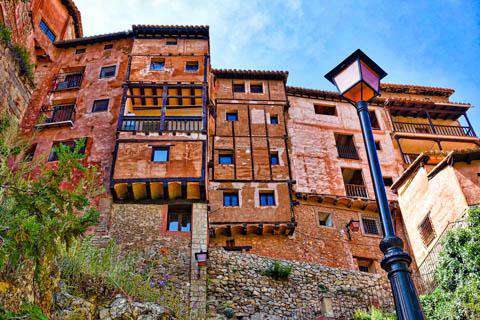Though it is the capital and the most-populated city in Aragon, Zaragoza is still considered a city less-traveled, especially since it just seems like a fly-over region, between Madrid and Barcelona. Nonetheless, Zaragoza is a great place to visit to dig up some history, art and culture.
Zaragoza experiences scorching hot summers and cold winters, with average low temperatures in the mid 30s to highs in the 90s. It rains most during spring and fall, but ultimately, there are more dry and sunny days throughout the year. Visit Zaragoza between April and mid-June or September to October to avoid the crowds of July and the deserted town in August when the locals take their vacations out of the city.
A few of the main sights Zaragoza are the Roman Catholic church, Basilica de Nuestra Senora del Pilar and the Aljaferia Palace, a medieval Islamic castle built in the 11th century, now occupied by the Aragonese parliament. Within the city are numerous other churches and cathedrals that display mudejar architecture, such as La Seo, the church of San Miguel and the church of San Pablo. Don't miss Ascensor de Pilar, which provides a spectacular view over the entire city.
El Pilar is a major annual festival which begins on the 12th of October and lasts nine days. It is celebrated city-wide with concerts, performances, parades, street fairs, circuses, and dances to honor the patron saint of the city, the Virgin Mary of the Pillar.
When it comes to food, check out some of the bars in the El Tubo neighborhood. This is the perfect place for a tapas pub crawl, as the alleys are full of bars and restaurants.
Once you're in town, you can get around cheaply by bus or even more cheaply by foot.
In Huesca and Teruel, you can bask in natural scenery from pine forests to mountains to high plains. The highlights of Huesca consist of the Castle of Montearagon, numerous churches, and Spain's oldest grocery store, Ultramarinos La Confianza. Founded in 1868, it is specially known for its local and artisanal products, from cheeses made in nearby mountains to winter spices and salt cod.
Huesca's largest and most important, annual event is the Festival of San Lorenzo, celebrated from the ninth to the 16th of August. Huesca is also a perfect backdrop to explore canyons by rafting and rappelling, which are offered by a number of local tour companies. It also offers five ski resorts toward the north of the province; Cerler has the highest elevation at 2,621 meters. Rent a bicycle to get around the city and also to see the nature surrounding, including caves, rivers, canyons, and villages that may be difficult to access otherwise.
Teruel, located in the mountains 3,000 feet above sea level, experiences more extreme climate, with hot summers that exceed 100 degrees and cold winters which drop to an average of as low as 19 degrees Fahrenheit. On the up side, these extreme temperatures are perfect for drying and curing ham, a specialty of the region. Due to Teruel's remote location, it has remained isolated over the years and has a sparse population of only a little more than 35,000 today.
Teruel is also notable for medieval towns, forts of the Knights Templar, Moorish cave paintings and architecture, and bedrocks which contained some of the oldest dinosaur fossils in the Iberian Peninsula. Within Teruel, public transportation consists of city buses run by Grupo Autobuses Jimenez.
 Aragon, Spain
Aragon, Spain

 Budget Your Trip is all about finding out how much everything costs so that you can travel cheaper and longer. Created by avid travelers Laurie and Bryan, our goal is to help you plan your next trip on the right budget. With average daily travel costs that are calculated from the budgets of real travelers, plus an analysis of hotel and tour prices, you can find out how much money you need to plan your next adventure. We also have plenty of travel advice, accommodation reviews, and activity suggestions.
Budget Your Trip is all about finding out how much everything costs so that you can travel cheaper and longer. Created by avid travelers Laurie and Bryan, our goal is to help you plan your next trip on the right budget. With average daily travel costs that are calculated from the budgets of real travelers, plus an analysis of hotel and tour prices, you can find out how much money you need to plan your next adventure. We also have plenty of travel advice, accommodation reviews, and activity suggestions.